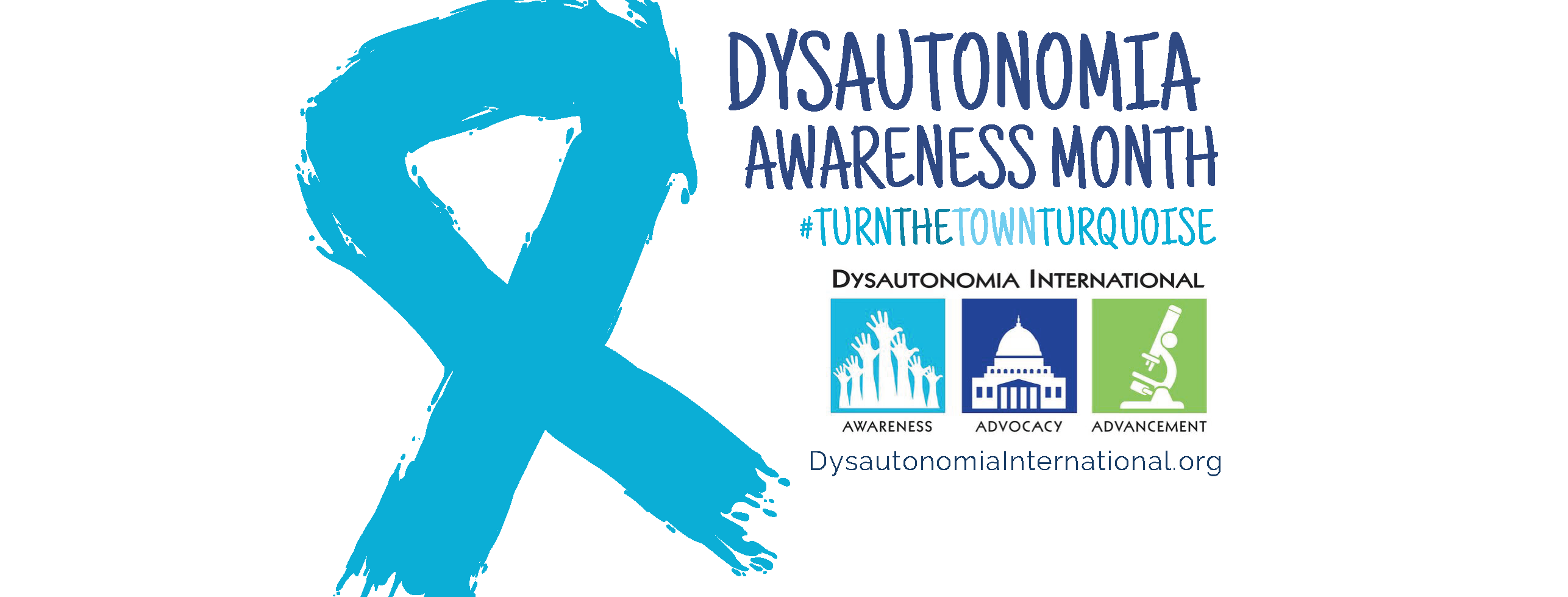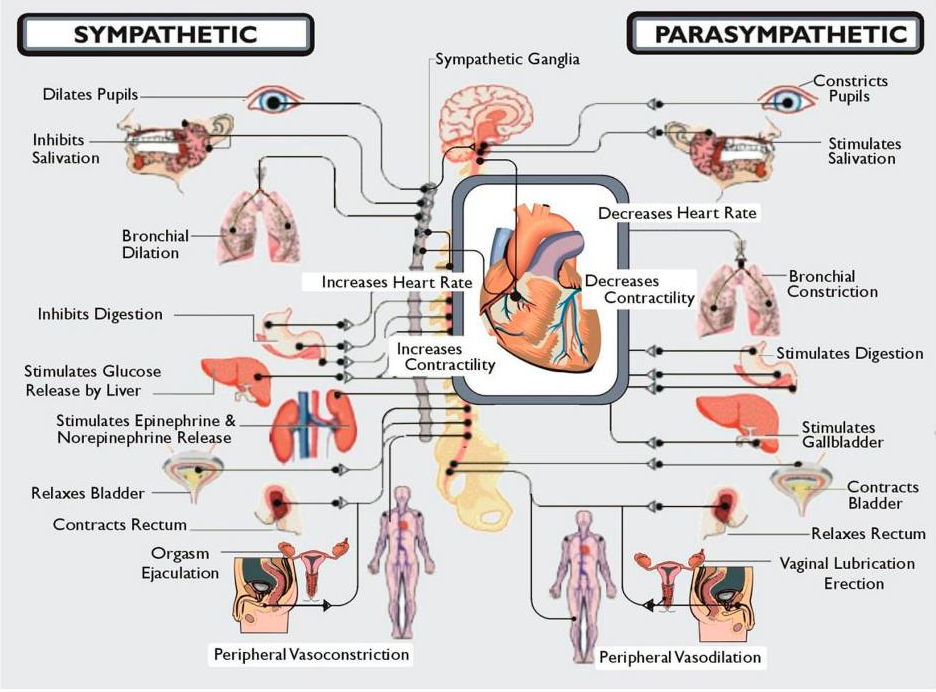
Dysautonomia International
Awareness - Advocacy - Advancement
Informations Kits for Doctors
Make a packet for your doctors that includes a friendly cover letter and two or three journal articles on the condition(s) you would like them to read up on.
10 Facts Doctors Should Know About POTSMedical Journal Articles on Postural Orthostatic Tachycardia Syndrome
Medical Journal Articles on Neurocardiogenic Syncope
Medical Journal Articles on Pure Autonomic Failure
Medical Journal Articles on Multiple System Atrophy
Dysautonomia International on Instagram
Basics of the Autonomic Nervous System

According to Dysautonomia International, in order to understand the various forms of dysautonomia, it is a good idea to learn a little bit about the basics of the autonomic nervous system (the "ANS"). The ANS is a very complex system of nerves in the brain, spinal cord, and peripheral nerves that reach out to the limbs and organs. The ANS can be divided into three main areas. The central (brain) portions of the ANS are found in the medulla oblogata in the lower brain stem, and also in the hypothalmus. The other two portions of the ANS are found in the peripheral nerves, including the Sympathetic Nervous System branch, and the Parasympathetic Nervous System branch.
The medulla oblongata is a part of the brain that regulates cardiac, respiratory, vasomotor control, as well as reflexes like coughing, sneezing, vommitting and swallowing. The hypothalmus, another part of the brain, performs a supporting role by linking the nervous system to the endocrine system. The hypothalmus regulates body temperature, thirst, hunger, sleep and circadian rythyms in the body. Through endocrine control, the hypothamlus also plays a role in regulating blood volume and blood pressure.
The Sympathetic Nervous System is commonly associated with the "fight or flight" responses - those bodily reactions that you need to respond quickly in an emergency. When faced with a life threatening situation, your human instinct takes over and you either fight the danger you are facing, or you take flight and run away from the danger. Your Sympathetic Nervous System allows your body to do this rapidly. For example, in the face of danger, your Sympathetic Nervous system will cause bronchial dilation - this allows you to breathe better while you are fighting or running away from the dangerous situation. Likewise, your heart will beat stronger and faster, also prepping the body to fight or take flight.
The Parasympathetic Nervous System is commonly associated with the "rest and digest" responses - those bodily actions needed to restore energy and rest the body. For example, chewing food triggers the Parasympathetic Nervous System to increase production of saliva and to increase digestion in the gut. The Parasympathetic Nervous System also increases gallbladder function, which assists in the digestive process.